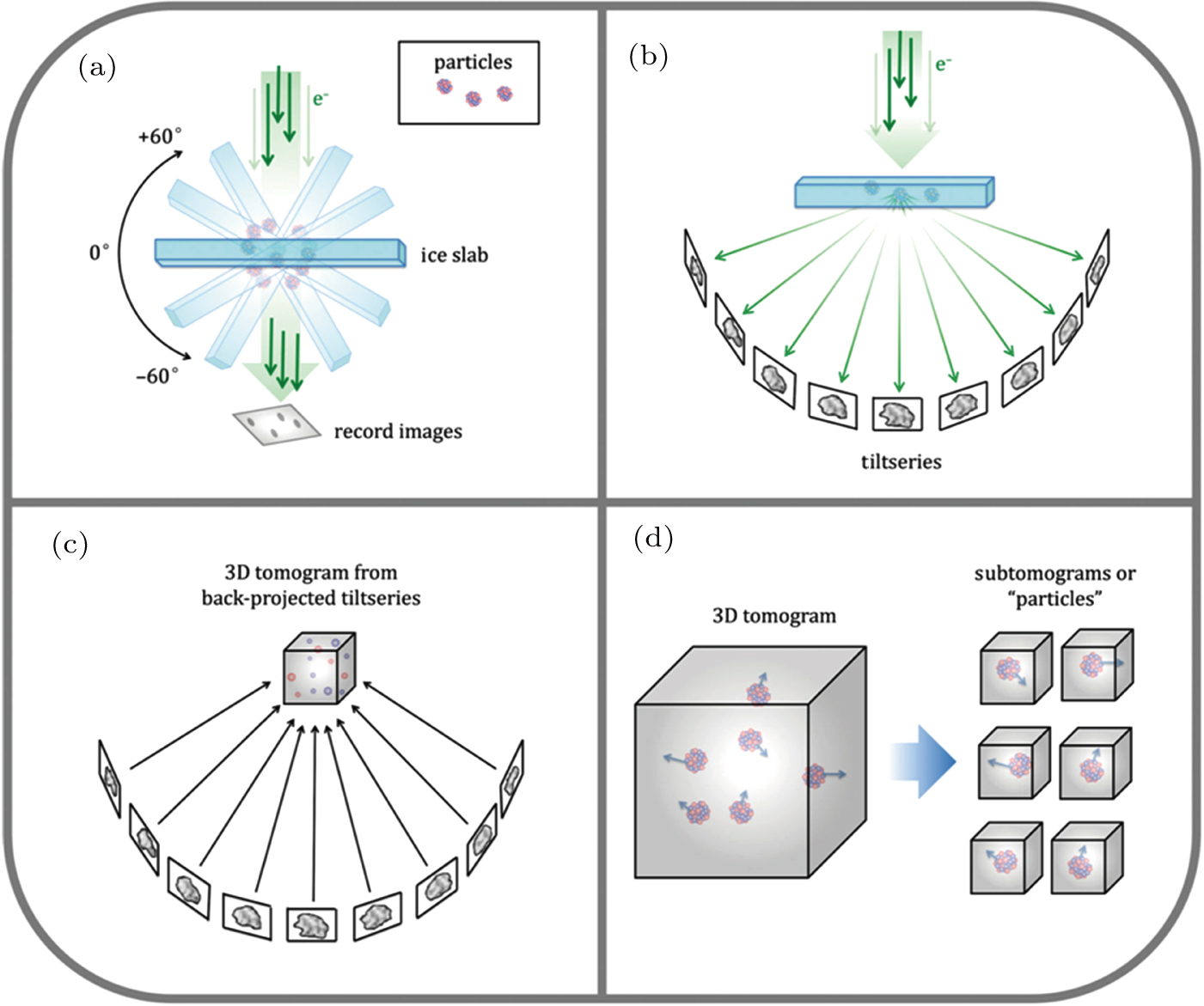Cryo-ET bridges the gap between cell biology and structural biophysics
Project supported by the National Key Research and Development Program of China (Grant No. 2017YFA0504800) and the Pujiang Talent Program (Grant No. 17PJ1406700).
(color online) Basic pipelines of cryo-ET. Basic pipeline for cryo-ET. (a) The sample stages are usually tilted from −60° to +60°, (b) allowing projection images at varying angles to be recorded. (c) These 2D projection images are then reconstructed computationally to generate a 3D volumetric structure known as a “tomogram”. Structural features of interest in the tomogram are segmented either manually or automatically by a specialized visualization software, to create 3D annotations, which can then be used for both visualization and statistical analysis. (d) Repetitive structures in a tomogram can be extracted as “sub-tomograms” for furthering averaging. Modified with permission from Galaz-Montoya et al., 2017.
